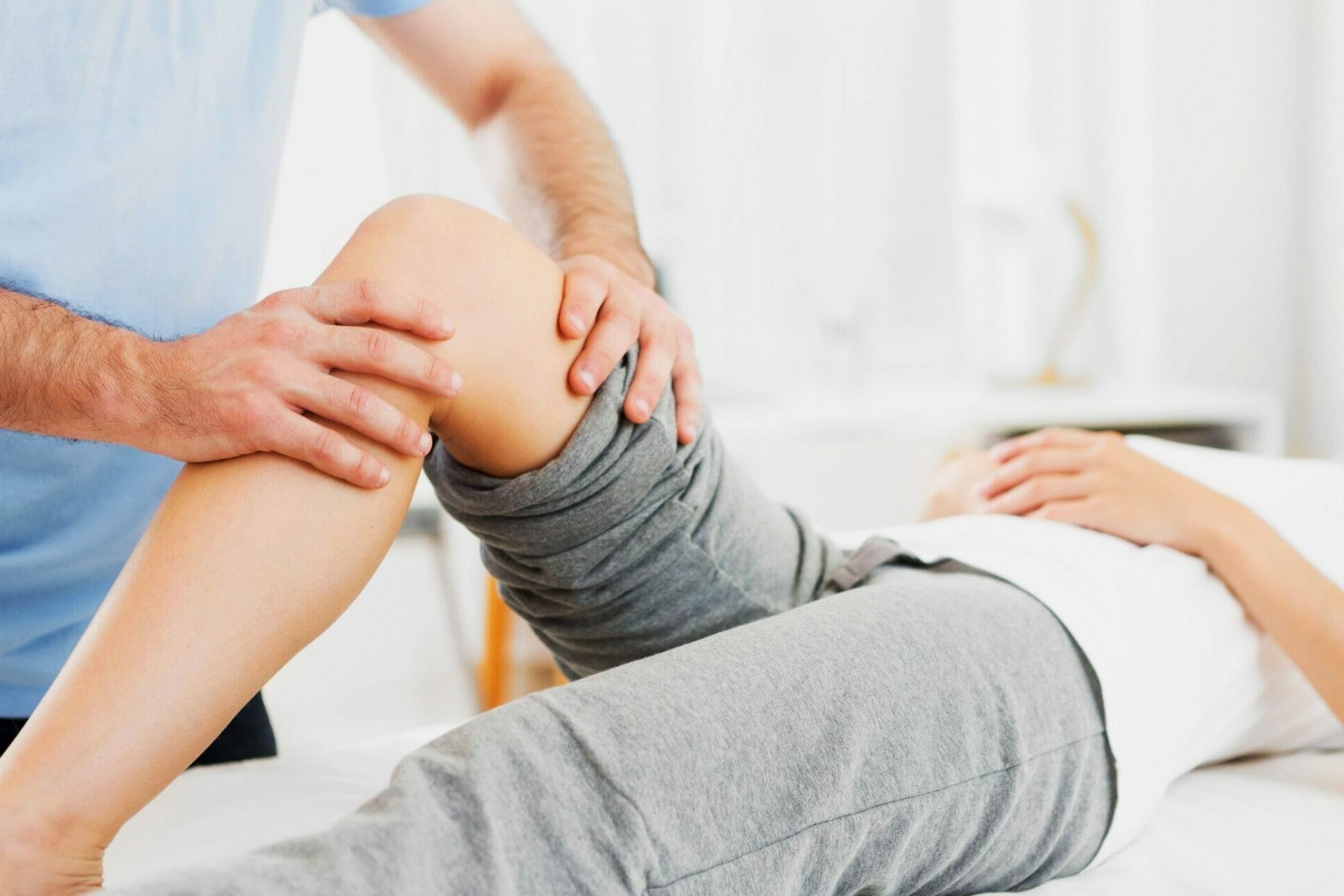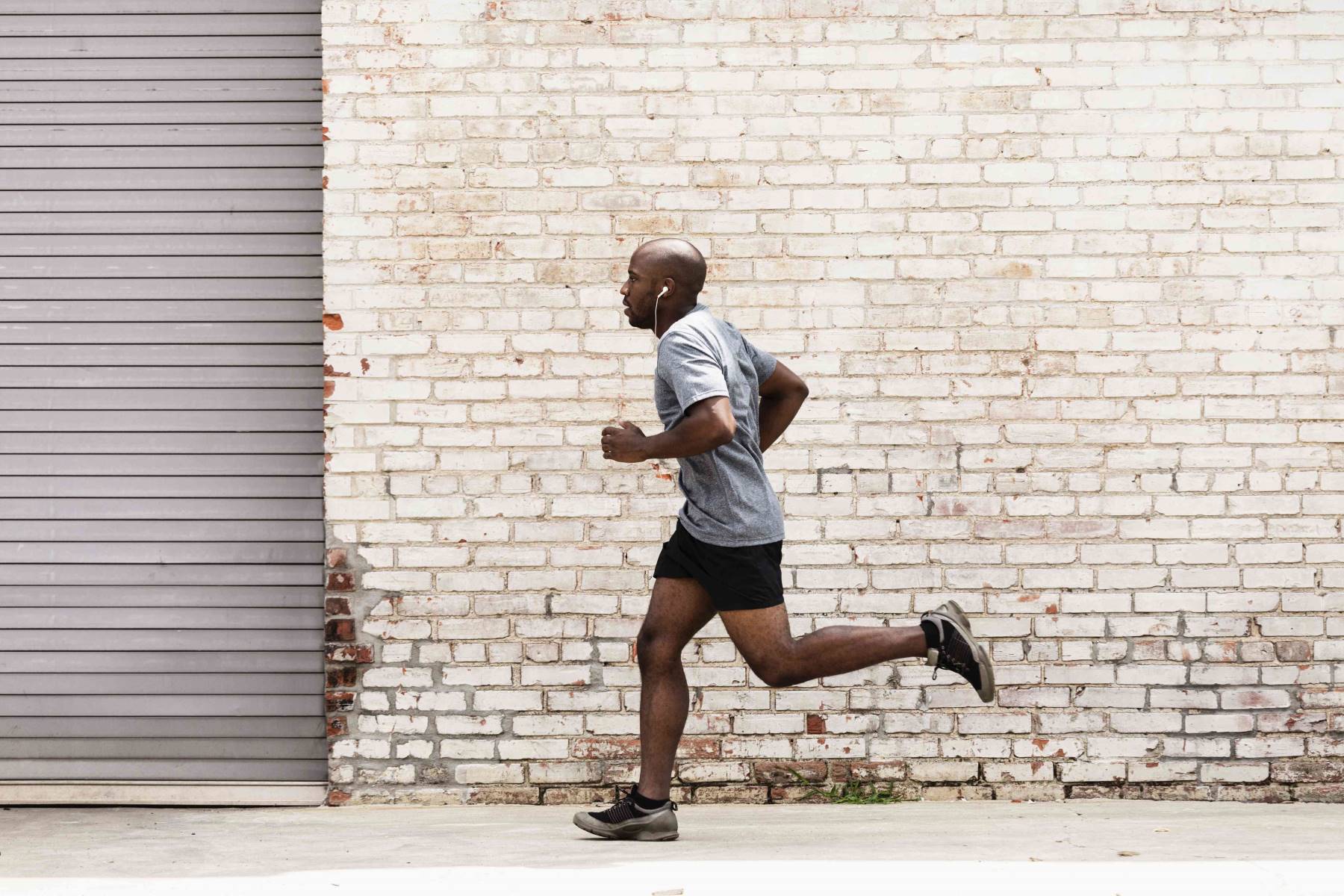Home>Health & Nutrition>Injury Prevention>8 Running Exercises To Reduce The Risk Of Injury


Injury Prevention
8 Running Exercises To Reduce The Risk Of Injury
Published: February 22, 2024
Discover 8 effective running exercises for injury prevention. Reduce the risk of injury and improve your running performance with these targeted workouts.
(Many of the links in this article redirect to a specific reviewed product. Your purchase of these products through affiliate links helps to generate commission for Therunningadvisor.com, at no extra cost. Learn more)
Table of Contents
- Importance of Injury Prevention in Running
- Dynamic Warm-Up Exercises for Runners
- Strength Training Exercises for Runners
- Flexibility Exercises for Runners
- Plyometric Exercises for Runners
- Balance and Stability Exercises for Runners
- Running Form Drills for Injury Prevention
- Cooling Down and Stretching Exercises for Runners
Importance of Injury Prevention in Running
Running is an exhilarating and rewarding form of exercise that offers numerous physical and mental health benefits. However, it is crucial for runners to prioritize injury prevention to ensure their long-term well-being and enjoyment of the sport. By incorporating targeted exercises and practices into their routine, runners can significantly reduce the risk of common injuries and maintain their overall fitness.
Injury prevention in running is paramount for several reasons. First and foremost, sustaining an injury can disrupt a runner's training regimen and lead to extended periods of inactivity, which may hinder progress and result in frustration. Moreover, injuries such as sprains, strains, and stress fractures can cause significant discomfort and may require extensive rehabilitation, impacting both physical and mental well-being.
Furthermore, prioritizing injury prevention in running helps individuals maintain their overall health and fitness levels. By avoiding injuries, runners can consistently engage in their chosen form of exercise, reaping the benefits of improved cardiovascular health, enhanced endurance, and weight management. This, in turn, contributes to a better quality of life and a sense of accomplishment.
Additionally, injury prevention plays a crucial role in promoting longevity in running. By adopting proactive measures to minimize the risk of injuries, runners can sustain their passion for the sport over the long term, participating in races and events without being sidelined by preventable setbacks.
In essence, injury prevention in running is not only about avoiding immediate physical discomfort; it is a proactive approach to safeguarding one's overall well-being, maintaining fitness levels, and nurturing a sustained love for the sport. By recognizing the significance of injury prevention and integrating targeted exercises and practices, runners can enjoy the countless benefits of running while minimizing the potential for setbacks and discomfort.
Dynamic Warm-Up Exercises for Runners
Dynamic warm-up exercises are essential for preparing the body for the physical demands of running. Unlike static stretching, which involves holding a position for an extended period, dynamic warm-up exercises involve continuous movement to increase blood flow, improve flexibility, and activate the muscles. By incorporating dynamic warm-up exercises into their pre-run routine, runners can enhance their performance and reduce the risk of injury.
1. Leg Swings
Leg swings are an effective dynamic warm-up exercise that targets the hamstrings, quadriceps, and hip flexors. To perform leg swings, stand upright and hold onto a stable surface for balance. Swing one leg forward and backward in a controlled manner, gradually increasing the range of motion. This exercise helps improve hip mobility and prepares the lower body for the repetitive motion of running.
2. High Knees
High knees are a classic dynamic warm-up exercise that engages the hip flexors and quadriceps while promoting cardiovascular activation. Begin by standing upright and lifting each knee toward the chest in a marching motion. Focus on maintaining an upright posture and engaging the core muscles. High knees help improve running form and enhance overall lower body coordination.
3. Butt Kicks
Butt kicks are an effective way to dynamically stretch the quadriceps and engage the hamstrings. While standing upright, alternate bringing each heel toward the glutes in a controlled manner. This exercise promotes increased blood flow to the lower body and helps prepare the muscles for the running motion, reducing the risk of strains and tightness.
4. Lunge with a Twist
Lunges with a twist combine lower body activation with rotational movement, engaging the hip flexors, quadriceps, and core muscles. Step forward into a lunge position and rotate the torso toward the front leg, then return to the starting position and repeat on the opposite side. This exercise helps improve hip mobility and enhances overall stability, preparing the body for the multi-directional movements involved in running.
5. Ankle Rolls
Ankle rolls are a simple yet effective dynamic warm-up exercise that targets the ankle joints and calf muscles. While standing, lift one foot off the ground and gently rotate the ankle in a circular motion, alternating between clockwise and counterclockwise movements. This exercise helps improve ankle mobility and flexibility, crucial for maintaining proper running form and reducing the risk of ankle-related injuries.
By incorporating these dynamic warm-up exercises into their pre-run routine, runners can effectively prepare their bodies for the physical demands of running, reduce the risk of injury, and optimize their overall performance. Dynamic warm-ups not only enhance flexibility and mobility but also promote increased blood flow and muscle activation, setting the stage for a successful and enjoyable running experience.
Strength Training Exercises for Runners
Strength training is a fundamental component of a well-rounded running regimen, playing a pivotal role in enhancing performance, reducing the risk of injury, and promoting overall physical resilience. By incorporating targeted strength training exercises into their routine, runners can effectively improve muscular strength, endurance, and stability, ultimately contributing to a more efficient and sustainable running experience.
1. Squats
Squats are a foundational strength training exercise that targets the quadriceps, hamstrings, glutes, and core muscles. By performing squats with proper form, runners can develop lower body strength and stability, essential for maintaining proper running mechanics and reducing the risk of overuse injuries. Additionally, squats contribute to improved overall lower body power and endurance, enhancing a runner's ability to tackle varying terrains and distances.
Read more: Can Running Help Reduce Anxiety?
2. Lunges
Lunges are a versatile strength training exercise that engages the quadriceps, hamstrings, glutes, and hip flexors. By incorporating lunges into their routine, runners can improve unilateral leg strength and stability, addressing potential muscle imbalances and promoting symmetrical movement patterns. This exercise also aids in enhancing hip mobility and overall lower body coordination, crucial for maintaining proper running form and reducing the risk of strain-related injuries.
3. Deadlifts
Deadlifts are a compound strength training exercise that targets the posterior chain, including the hamstrings, glutes, and lower back muscles. By incorporating deadlifts into their routine, runners can effectively improve overall lower body strength and stability, essential for powering through inclines and maintaining proper running posture. Additionally, deadlifts contribute to enhanced hip hinge mechanics and core stability, promoting efficient energy transfer and reducing the risk of lower back discomfort during running.
4. Planks
Planks are a core-strengthening exercise that targets the abdominal muscles, obliques, and lower back. By incorporating planks into their routine, runners can develop a strong and stable core, essential for maintaining proper running posture and minimizing excessive movement in the upper body. A strong core also contributes to improved overall stability and balance, reducing the risk of overcompensation and potential injury during running.
5. Calf Raises
Calf raises are a targeted strength training exercise that focuses on the calf muscles, crucial for providing propulsion and stability during running. By incorporating calf raises into their routine, runners can strengthen the calf muscles, reducing the risk of calf strains and promoting efficient push-off during each stride. Additionally, strong calf muscles contribute to improved overall lower leg stability, essential for navigating uneven terrain and minimizing the risk of ankle-related discomfort.
By integrating these strength training exercises into their regimen, runners can effectively enhance their muscular strength, endurance, and stability, ultimately reducing the risk of injury and optimizing their overall running performance. Additionally, targeted strength training contributes to improved running economy and resilience, enabling runners to tackle varying challenges with confidence and efficiency.
Flexibility Exercises for Runners
Flexibility is a crucial component of a well-rounded running routine, playing a pivotal role in enhancing performance, reducing the risk of injury, and promoting overall physical resilience. By incorporating targeted flexibility exercises into their regimen, runners can effectively improve joint mobility, muscle elasticity, and range of motion, ultimately contributing to a more efficient and sustainable running experience.
1. Dynamic Stretching
Dynamic stretching involves continuous movement through a full range of motion, promoting increased blood flow and flexibility in the muscles and joints. Dynamic stretches such as leg swings, arm circles, and walking lunges help prepare the body for the repetitive motion of running while reducing the risk of muscle tightness and discomfort. By incorporating dynamic stretching into their pre-run routine, runners can effectively prime their muscles and joints for the demands of running, promoting optimal performance and reducing the likelihood of strain-related injuries.
2. Hip Flexor Stretch
The hip flexors play a crucial role in running mechanics, and maintaining their flexibility is essential for promoting proper stride length and overall lower body coordination. The hip flexor stretch involves assuming a lunge position and gently pressing the hips forward, targeting the muscles at the front of the hip. By incorporating this stretch into their routine, runners can alleviate tightness in the hip flexors, promoting improved running posture and reducing the risk of overuse injuries related to hip imbalances.
3. Hamstring Stretch
The hamstrings are pivotal for maintaining proper running mechanics and stride length, making their flexibility a key consideration for injury prevention. The standing hamstring stretch involves extending one leg forward with the toes pointed upward and gently leaning forward from the hips, targeting the muscles at the back of the thigh. By regularly performing this stretch, runners can improve hamstring flexibility, reducing the risk of strains and promoting a more efficient running gait.
Read more: Top 8 Running Books: A Must-Read Collection
4. Calf Stretch
Calf flexibility is essential for providing propulsion and stability during running, making the calf stretch a valuable addition to a runner's flexibility routine. This stretch involves placing one foot behind the body with the heel on the ground and gently leaning forward, targeting the muscles of the calf. By incorporating calf stretches into their routine, runners can maintain optimal calf flexibility, reducing the risk of discomfort and strain-related injuries during running.
5. IT Band Stretch
The iliotibial (IT) band plays a crucial role in stabilizing the knee during running, and maintaining its flexibility is essential for reducing the risk of discomfort and potential injuries. The IT band stretch involves crossing one leg behind the other and gently leaning to the opposite side, targeting the outer thigh and hip. By regularly performing this stretch, runners can alleviate tightness in the IT band, promoting improved knee stability and reducing the likelihood of IT band syndrome.
By integrating these flexibility exercises into their routine, runners can effectively improve joint mobility, muscle elasticity, and range of motion, ultimately reducing the risk of injury and optimizing their overall running performance. Additionally, targeted flexibility exercises contribute to improved running economy and resilience, enabling runners to tackle varying challenges with confidence and efficiency.
Plyometric Exercises for Runners
Plyometric exercises, also known as jump training, are dynamic movements that involve rapid muscle lengthening followed by a powerful contraction, aiming to improve muscle power, agility, and overall athletic performance. When incorporated into a runner's training regimen, plyometric exercises can significantly enhance running efficiency, lower body strength, and neuromuscular coordination, ultimately reducing the risk of injury and optimizing running performance.
1. Box Jumps
Box jumps are a foundational plyometric exercise that involves explosively jumping onto a sturdy platform, such as a plyometric box or elevated surface, and then stepping back down. This exercise targets the muscles of the lower body, including the quadriceps, hamstrings, and calves, while also engaging the core for stability. By performing box jumps, runners can develop explosive power and improve their ability to generate force with each stride, ultimately enhancing running speed and efficiency.
Read more: Maintaining Running Fitness During Injury
2. Jump Squats
Jump squats are an effective plyometric exercise that combines the benefits of traditional squats with explosive jumping movements. To perform jump squats, individuals begin in a squat position and then explosively jump upward, extending the hips and knees before landing softly back into the squat position. This exercise targets the lower body muscles while promoting enhanced muscle recruitment and power development, crucial for propelling the body forward during running.
3. Single-Leg Hops
Single-leg hops are a valuable plyometric exercise that focuses on unilateral lower body strength and stability. By hopping forward or laterally on a single leg, runners can improve balance, proprioception, and neuromuscular control, addressing potential muscle imbalances and promoting symmetrical movement patterns. Single-leg hops also aid in enhancing ankle stability and overall lower body coordination, essential for navigating uneven terrain and reducing the risk of ankle-related discomfort during running.
4. Depth Jumps
Depth jumps involve stepping off a raised platform and immediately exploding upward upon landing, engaging the muscles in a rapid stretch-shortening cycle. This plyometric exercise targets the lower body muscles while promoting enhanced reactive strength and force absorption, crucial for managing the impact forces associated with running. By incorporating depth jumps into their training, runners can improve their ability to efficiently absorb and utilize energy, ultimately reducing the risk of overuse injuries and enhancing overall running resilience.
5. Lateral Bounds
Lateral bounds are dynamic plyometric movements that involve explosively jumping laterally from one foot to the other, promoting enhanced lower body power and agility. This exercise targets the muscles of the hips, thighs, and calves while also engaging the stabilizing muscles of the core. By incorporating lateral bounds into their routine, runners can improve lateral strength and stability, crucial for navigating uneven terrain and promoting overall lower body resilience during running.
By integrating these plyometric exercises into their training regimen, runners can effectively enhance their lower body power, agility, and neuromuscular coordination, ultimately reducing the risk of injury and optimizing their overall running performance. Additionally, targeted plyometric training contributes to improved running economy and resilience, enabling runners to tackle varying challenges with confidence and efficiency.
Read more: Top 8 Santa Runs Happening In December
Balance and Stability Exercises for Runners
Balance and stability are essential components of a runner's overall physical resilience and performance. By incorporating targeted exercises that enhance balance, proprioception, and core stability, runners can significantly reduce the risk of injury and improve their ability to navigate varying terrains and running conditions.
1. Single-Leg Balance
Single-leg balance exercises are fundamental for improving stability and proprioception. By standing on one leg for a designated period, runners can enhance their ability to maintain equilibrium and control body movements. This exercise not only strengthens the stabilizing muscles of the ankle, knee, and hip but also promotes symmetrical lower body coordination, reducing the risk of overuse injuries and enhancing overall running efficiency.
2. Bosu Ball Exercises
Bosu balls, with their unstable surface, provide an excellent platform for balance and stability training. By performing exercises such as squats, lunges, and single-leg stands on a Bosu ball, runners can challenge their proprioception and core stability, ultimately improving their ability to maintain balance and control during running. Bosu ball exercises also engage smaller, stabilizing muscles, contributing to enhanced overall lower body resilience.
3. Stability Ball Planks
Stability ball planks are a valuable core-strengthening exercise that also targets balance and stability. By assuming a plank position with the forearms on a stability ball, runners can engage the core muscles while simultaneously challenging their balance and proprioception. This exercise not only promotes a strong and stable core but also enhances overall body control, reducing the likelihood of excessive movement and potential injury during running.
Read more: Running: Understanding Adductor Injuries
4. Lateral Band Walks
Lateral band walks are effective for targeting the hip abductors and external rotators, crucial for maintaining proper lower body alignment and stability during running. By placing a resistance band around the thighs and performing side-to-side steps, runners can strengthen the muscles responsible for stabilizing the pelvis and maintaining optimal hip alignment. This exercise helps address potential muscle imbalances and promotes overall lower body stability, reducing the risk of discomfort and injury.
5. Yoga and Pilates
Yoga and Pilates offer a holistic approach to balance, stability, and core strength. By incorporating poses and movements that challenge balance and engage the core, runners can improve their overall body awareness and stability. Additionally, the focus on controlled breathing and mindful movement in yoga and Pilates can enhance mental focus and resilience, contributing to a more balanced and stable running experience.
By integrating these balance and stability exercises into their training regimen, runners can effectively improve their overall stability, proprioception, and core strength, ultimately reducing the risk of injury and optimizing their running performance. Additionally, targeted balance and stability training contribute to improved running economy and resilience, enabling runners to tackle varying challenges with confidence and efficiency.
Running Form Drills for Injury Prevention
Running form drills are instrumental in promoting proper biomechanics, enhancing running efficiency, and reducing the risk of injury. By incorporating targeted form drills into their training regimen, runners can address potential gait imbalances, improve muscle coordination, and optimize their overall running mechanics.
1. High Knees
High knees drills focus on promoting optimal knee lift and forward propulsion, essential for efficient running mechanics. By exaggerating the knee lift with each stride, runners can strengthen the hip flexors and improve overall lower body coordination. This drill also encourages a midfoot strike and promotes a more upright posture, reducing the likelihood of excessive heel striking and potential strain on the lower extremities.
Read more: The Impact Of Running On Meniscal Cysts
2. Butt Kicks
Butt kicks drills emphasize the activation of the hamstrings and the promotion of a quick and compact running stride. By bringing the heels up toward the glutes with each step, runners can enhance hamstring flexibility and improve the overall range of motion in the lower body. This drill also encourages a more rapid turnover, reducing the risk of overstriding and excessive impact on the joints.
3. Strides
Strides, also known as accelerations, involve gradually increasing speed over a short distance while focusing on maintaining proper running form. By incorporating strides into their routine, runners can improve their running economy, enhance muscle coordination, and promote a more efficient foot strike. This drill also aids in developing a smooth and powerful running stride, ultimately reducing the risk of overuse injuries and promoting overall running resilience.
4. Cadence Drills
Cadence drills focus on promoting a higher step turnover, ultimately reducing the risk of overstriding and excessive impact on the lower body. By practicing quick, light steps with a focus on maintaining a consistent rhythm, runners can improve their overall running efficiency and reduce the potential for discomfort and strain. This drill also encourages a more balanced distribution of impact forces, contributing to a more sustainable and injury-resistant running gait.
5. Arm Swing Drills
Arm swing drills emphasize the coordination and synchronization of arm movements with the lower body during running. By practicing controlled and efficient arm swings, runners can improve their overall balance, stability, and forward propulsion. This drill also aids in reducing excessive upper body movement, promoting a more streamlined and energy-efficient running form.
By integrating these running form drills into their training regimen, runners can effectively improve their biomechanics, reduce the risk of injury, and optimize their overall running performance. Additionally, targeted form drills contribute to improved running economy and resilience, enabling runners to tackle varying challenges with confidence and efficiency.
Cooling Down and Stretching Exercises for Runners
After completing a challenging run, the cooling down phase is a crucial component of a runner's routine. It allows the body to gradually transition from intense physical activity to a state of rest, promoting recovery and reducing the risk of post-run discomfort. Additionally, incorporating targeted stretching exercises during the cooling down phase can further enhance flexibility, alleviate muscle tension, and contribute to overall injury prevention.
Importance of Cooling Down
The cooling down phase serves as a bridge between vigorous exercise and rest, allowing the body to gradually return to its pre-exercise state. This gradual transition is essential for preventing blood pooling in the extremities and facilitating the removal of metabolic by-products, such as lactic acid, from the muscles. By engaging in a structured cooling down routine, runners can promote circulation, reduce the likelihood of dizziness or fainting, and support the body's natural recovery processes.
Post-Run Stretching Exercises
Incorporating stretching exercises during the cooling down phase offers numerous benefits for runners. Stretching helps alleviate muscle tightness, improve range of motion, and promote muscular relaxation, ultimately contributing to enhanced recovery and injury prevention. By targeting key muscle groups involved in running, such as the hamstrings, quadriceps, calves, and hip flexors, runners can effectively address post-run muscle tension and promote overall flexibility.
1. Standing Hamstring Stretch
The standing hamstring stretch involves extending one leg forward with the toes pointed upward and gently leaning forward from the hips, targeting the muscles at the back of the thigh. This exercise helps alleviate tightness in the hamstrings, promoting improved flexibility and reducing the risk of strain-related discomfort.
2. Quadriceps Stretch
The quadriceps stretch involves bringing one heel toward the glutes and gently holding the ankle, targeting the muscles at the front of the thigh. By performing this stretch, runners can alleviate tightness in the quadriceps, promoting improved range of motion and reducing the likelihood of muscle imbalances.
3. Calf Stretch
Calf stretches involve placing one foot behind the body with the heel on the ground and gently leaning forward, targeting the muscles of the calf. By incorporating calf stretches into their routine, runners can maintain optimal calf flexibility, reducing the risk of discomfort and strain-related injuries during running.
4. Hip Flexor Stretch
The hip flexor stretch involves assuming a lunge position and gently pressing the hips forward, targeting the muscles at the front of the hip. By incorporating this stretch into their routine, runners can alleviate tightness in the hip flexors, promoting improved running posture and reducing the risk of overuse injuries related to hip imbalances.
5. IT Band Stretch
The IT band stretch involves crossing one leg behind the other and gently leaning to the opposite side, targeting the outer thigh and hip. By regularly performing this stretch, runners can alleviate tightness in the IT band, promoting improved knee stability and reducing the likelihood of IT band syndrome.
By incorporating these cooling down and stretching exercises into their post-run routine, runners can effectively support their body's recovery process, reduce the risk of post-run discomfort, and promote overall flexibility and injury prevention. Additionally, the cooling down phase offers an opportunity for runners to reflect on their performance, celebrate their achievements, and mentally prepare for future runs, fostering a holistic approach to their running experience.







